- Home
- slideshows
- miscellaneous
- Forget Mykonos and Santorini. I found a little-known island in Greece that's twice as beautiful and half the price
Forget Mykonos and Santorini. I found a little-known island in Greece that's twice as beautiful and half the price
After a few days in Mykonos, I was ready for a more relaxed Greek adventure. I hopped a ferry to Tinos for 20 Euros. Just about everyone on the ferry to Tinos was either Greek, Italian, or French.

Immediately upon arriving in Tinos, I realized how different the island is from Santorini or Mykonos. While its town, Chora, also has cobblestone streets and white Cycladic architecture, it's far quieter. During the day, it's practically empty. At night, it gets a bit busier when Greek vacationers and some other European tourists visit the tavernas and souvenir shops on the main street.
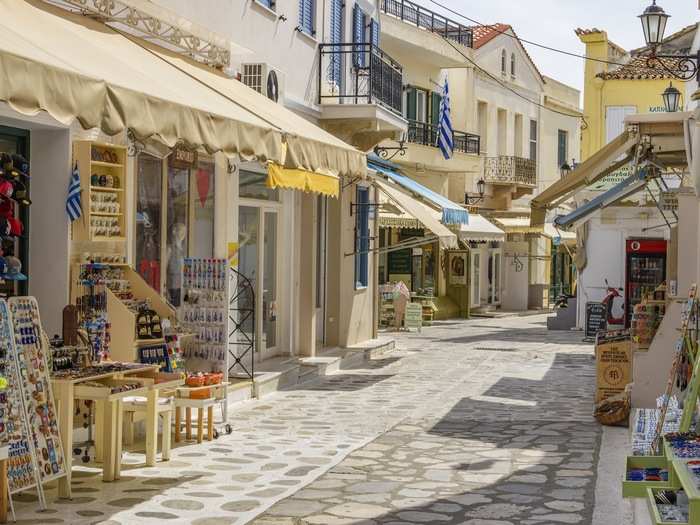
From a distance, Chora is spectacular. I stayed about a 10-minute walk from the main square at a small hotel called Agali Bay. While the hotel was nothing special architecturally, it was only $70 a night for a room with a view of the sea. The family that has run the hotel for 30 years was incredibly kind, helpful, and accommodating.
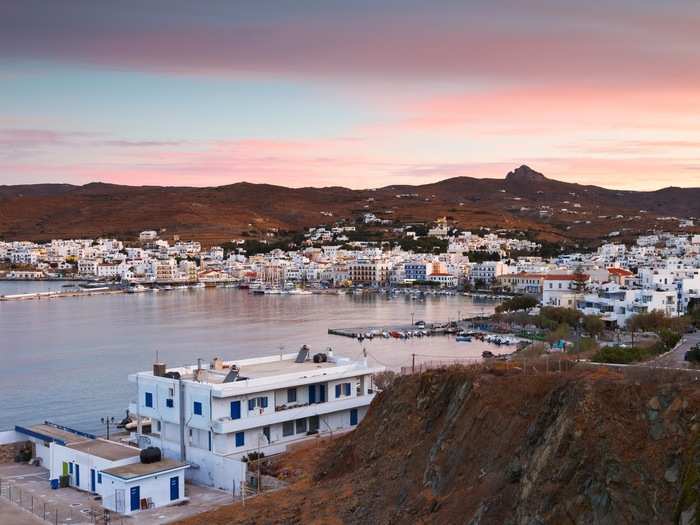
Source: Agali Bay Hotel
"Every Greek island is different. People go to Mykonos or Santorini for luxury. People come to Tinos to see Greek culture," one of the sister-owners told me upon arrival. The hotel had a view of Agios Nikolas, a marina and beach area.
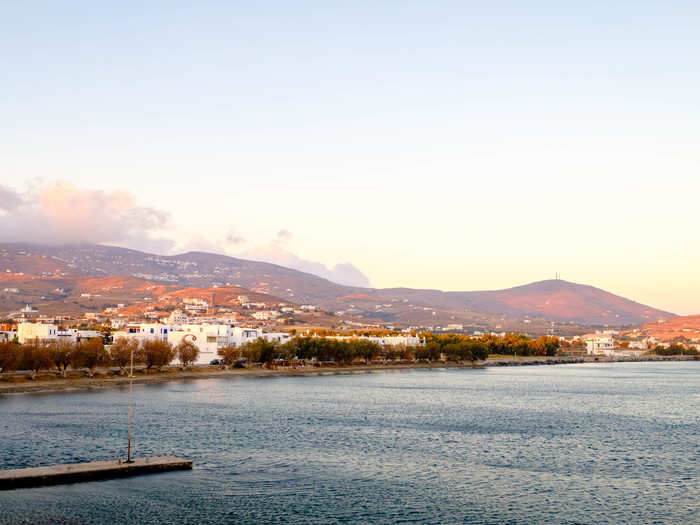
At the owner's suggestion, we walked the 10 minutes down the Agio Nikolas beach to a seaside taverna called San To Alati ("Like Salt"). The restaurant prides itself on local ingredients, like this fresh Tinos cheese. Perfectly plated with lemon zest and homemade bread, I was licking the plate. Afterwards, we had cod fricassee and a whole grilled squid. In total, it cost $43.
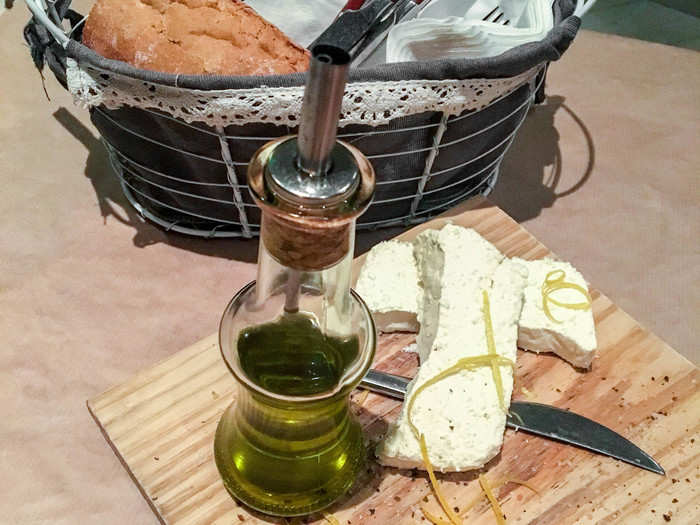
The next morning I had breakfast at Agali Bay, included in the price of the room. While not extravagant, it included coffee-to-order, fresh Greek yogurt, homemade pastries, and a selection of breads, cheeses, and cold cuts.

Over the next couple of days, I adapted to the slow rhythm of the island, whiling away the hours on a nearby beach or taking a dip in the bay.
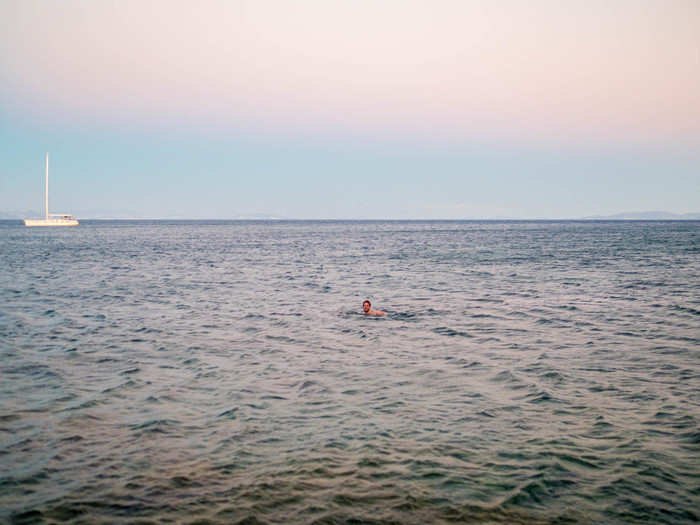
The island is by no means deserted — there are plenty of tourists — but it feels like you are stepping into the world of local Greeks, who are exceptionally welcoming to those interested in seeing their world.
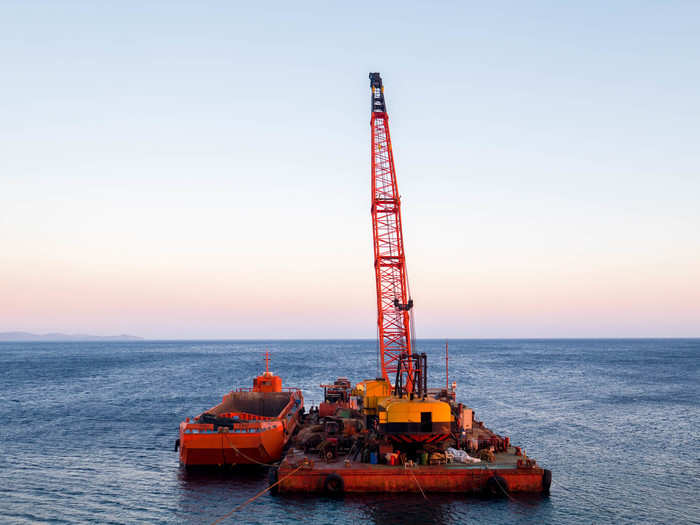
Tinos is well-known to Greeks because of the Church of Panagia Megalochari, considered one of the holiest places in Greece and the site where a miraculous icon of the Virgin Mary was found. The church, built in 1823, is magnificent. Greek pilgrims travel from all over to see it; some crawl on their knees from the port to the church out of reverence.
After seeing the church one night, I had dinner at Koutouki Tis Elenis, a taverna that looked like it was conjured from my Greek daydreams — festooned with hydrangeas, colorful tables, dusty bottles of wine, musical instruments, and wreaths of peppers. For $49, we had an appetizer of mussels, entrees of veal stewed in tomatoes and roast leg of lamb, and a bottle of retsina wine (a local specialty flavored with pine resin). The lamb was especially drool-worthy.

But Tinos is too big explore on foot. The island is 75 square miles of mountains, beaches, and historic villages. One day, I rented a car so I could see as much as possible.
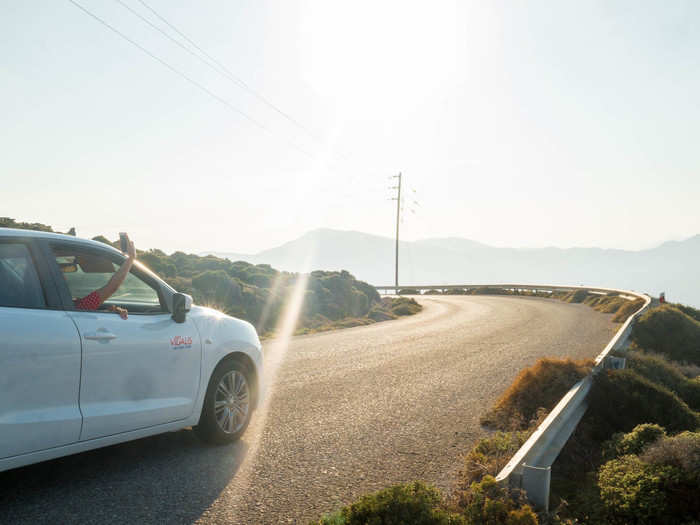
The first place I visited was Dio Horia, a tiny village built like an amphitheater into the side of Mount Exobourgo. It's often called "the balcony of Tinos" because of the way it overlooks the island.
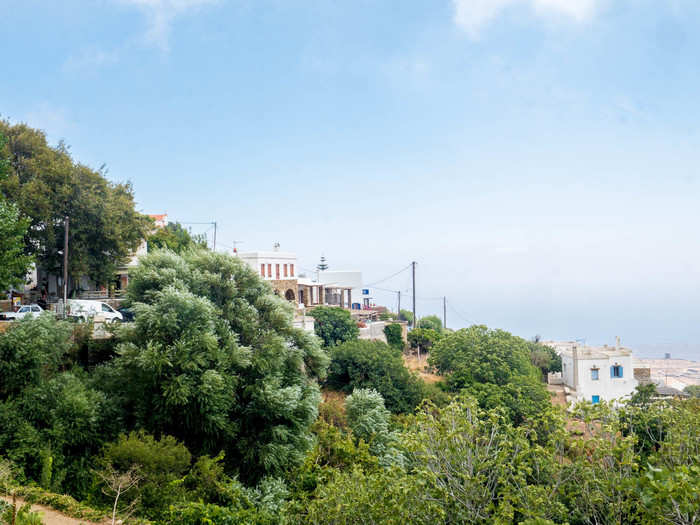
Source: Greeka
To reach it, you have to drive up a series of winding one-lane roads carved into the mountainside. The village of Dio Horia is made up of medieval white stone houses. There are a number of narrow alleys, arches, and arcades to get lost in.

In the village, I had lunch at a restaurant called ... Dio Horia. It has a gorgeous balcony and patio that overlooks the island.
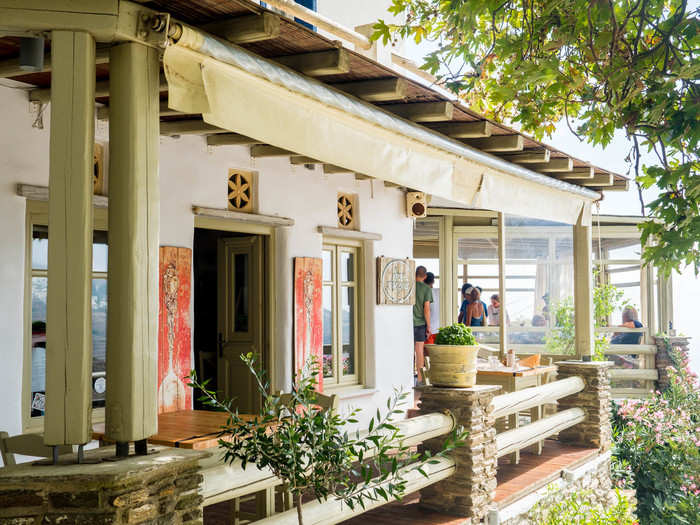
We ordered a platter of the local food stuffs, including sun dried tomatoes, a hunk of homemade bread, two kinds of sausage, two kinds of Tinos cheese (one like a semi-hard Italian cheese, the other a semi-soft goat cheese), marinated artichokes, smoked pork, and Tirokafteri (a spicy cheese spread). It was best meal I've had in months.
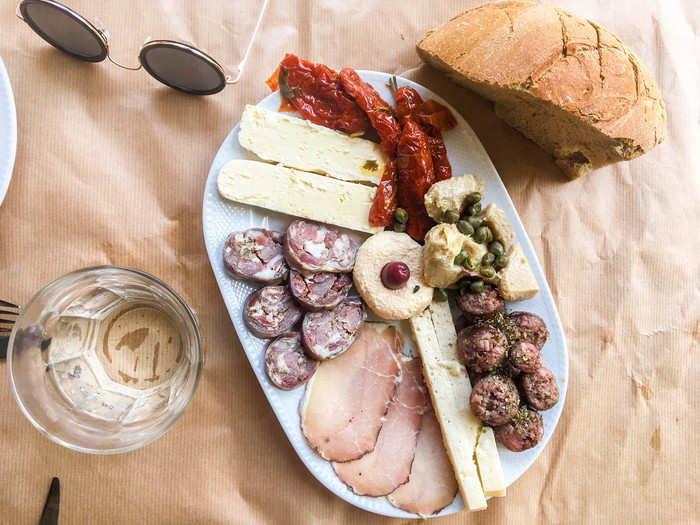
As you drive through the mountains of Tinos, you'll keep seeing dovecotes. Originally built in the 1700s, the dovecotes look like miniature castles. They were actually used to house pigeons, which were raised for meat and fertilizer. More than 1,000 dot the landscape.
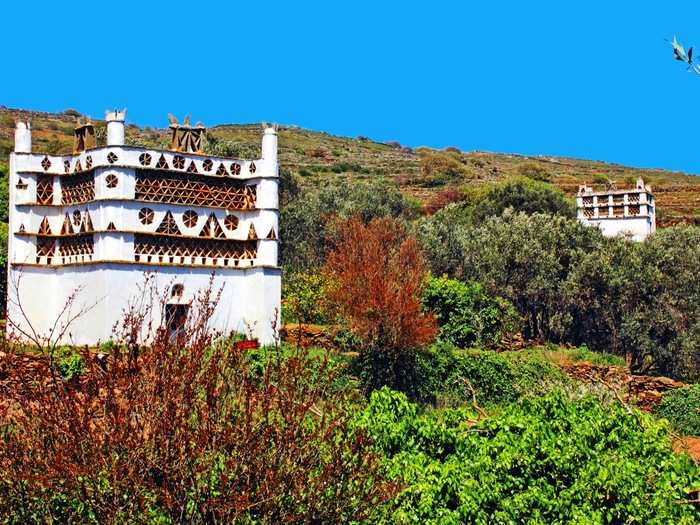
As you ascend the mountain roads, it feels like you are literally driving into the clouds. It's a strange feeling when the top of the island levels out and there are suddenly farm fields rather than craggy slopes.
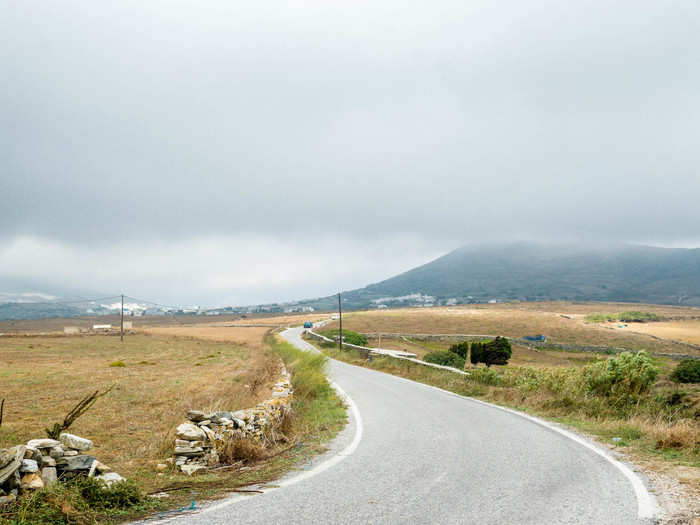
While not the biggest mountain on the island, Mount Exobourgo is one of the strangest-looking. That's it in the distance. Tinos is the kind of island where you might encounter a horse, a cow, or a goat just wandering along the paths.
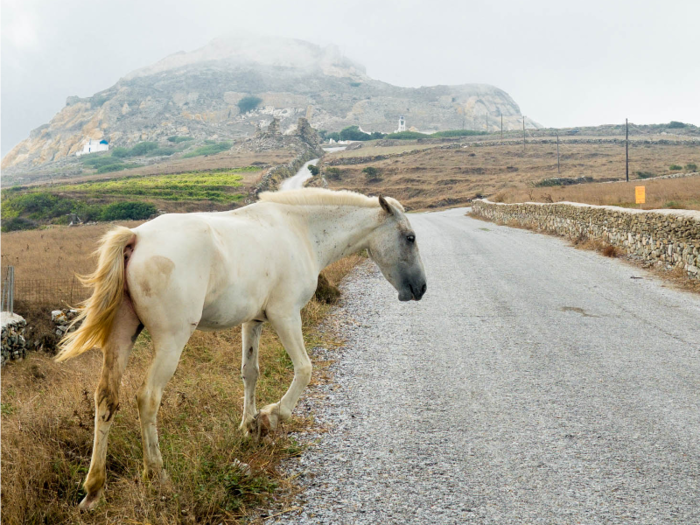
Or come across ancient-looking walls. Remains of civilizations dating back to the Copper Age (5000 B.C.E.) have been found near Mount Exobourgo. You can visit the historic ruins at Exobourgo, but I didn't have time. I had too many sights to see.
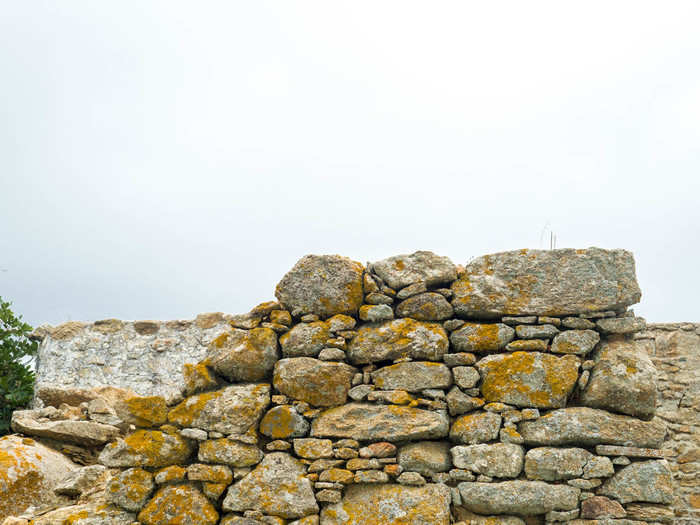
In 1842, Alexis de Valon, a French traveler, wrote of Tinos: "The whole island is cultivated with great determination, almost in defiance of nature; in the absence of soil, the inhabitants even plough the rocks." When you are driving across the peak of Tinos, it feels that way.
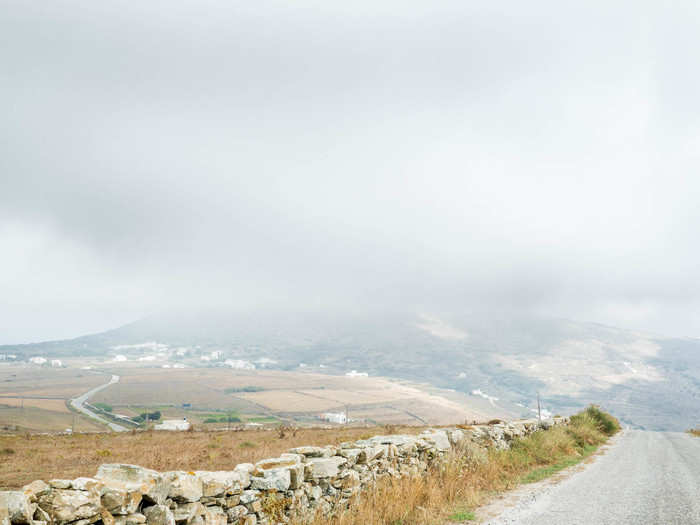
Source: The Guardian
Next, I headed to Volax, a village of 51 people (51!) built amongst a unique geological formation of giant round rocks. The nearly perfectly round boulders cover the landscape around the town. It feels like another planet.
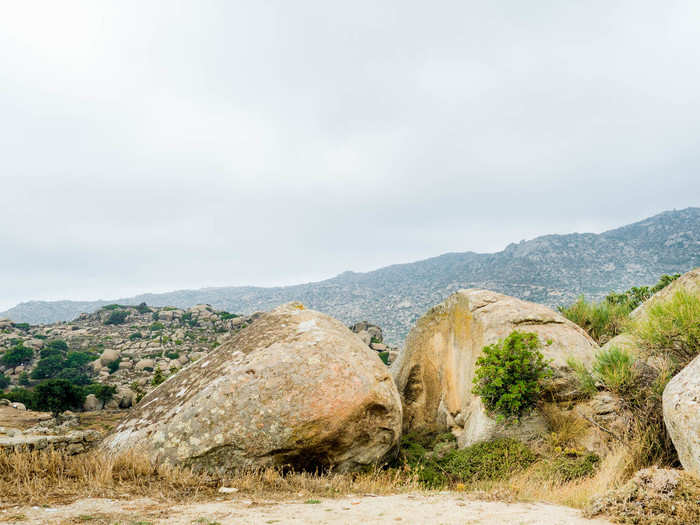
The town itself looks like a Cycladic postcard. Quiet and quaint, the town features numerous shops where townspeople sell handicrafts like pottery, painted rocks, tablecloths, local honey, and baskets.
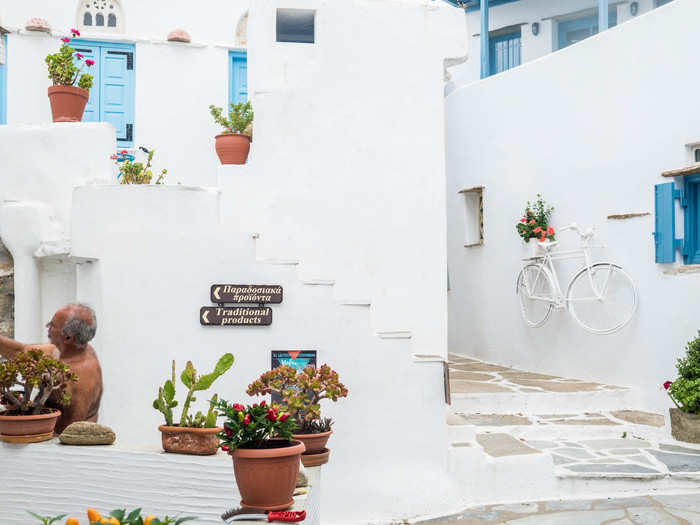
Nestled in the mountains, Volax is an interesting place to spend an hour wandering through the narrow streets and simply taking in the strange landscape. The rocks are supposedly the result of a volcanic eruption from thousands of years ago.
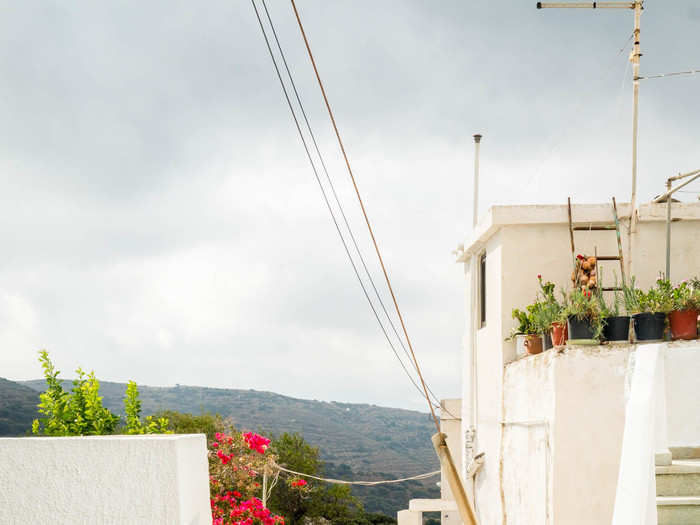
Source: Greeka
One of the most rewarding parts of walking around Volax is finding all the doors and walls chalked or carved with poems. I wish I could read Greek so I could understand.
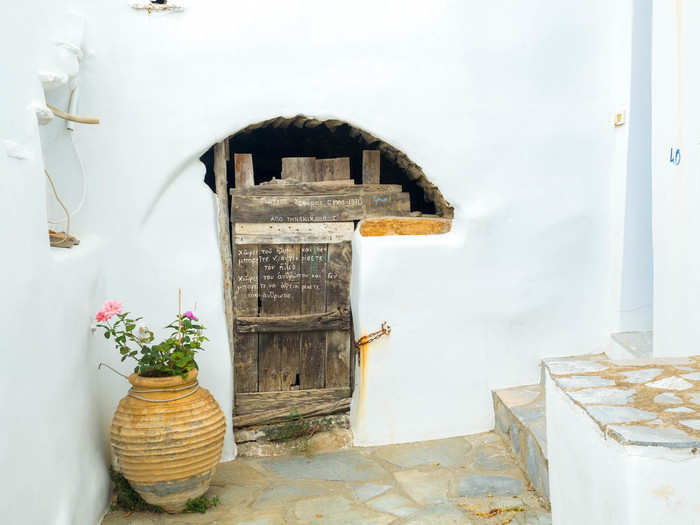
As I drove from Volax to the northern side of the island, I got a glimpse of the coast. The layering of hills and peaks sliding into the Mediterranean Sea was a sight to marvel over.
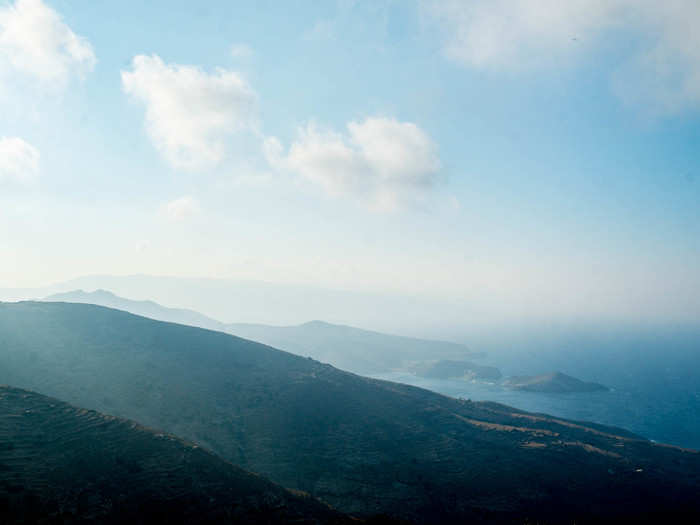
Every few miles, it seemed the entire landscape would change — not a small feat for an island as tiny as Tinos. Many of the mountain and hillsides seemed to be cut into terraces for farming. As I drove, the earthy smell of thyme carried on the wind.
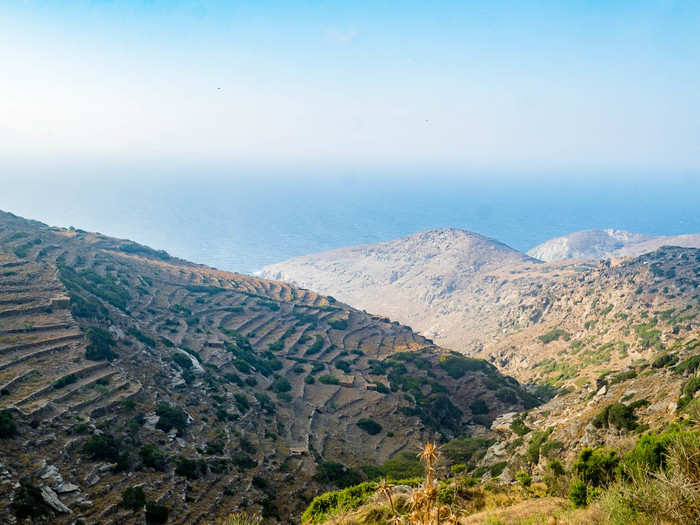
While Tinos has plenty of beaches, they are nothing like the glitzy beach bars found in Mykonos. Most looked like this one in Kolimbithra. Here the meltemi winds that batter the island created a kind of wave pool. It looked like a ton of fun to surf.
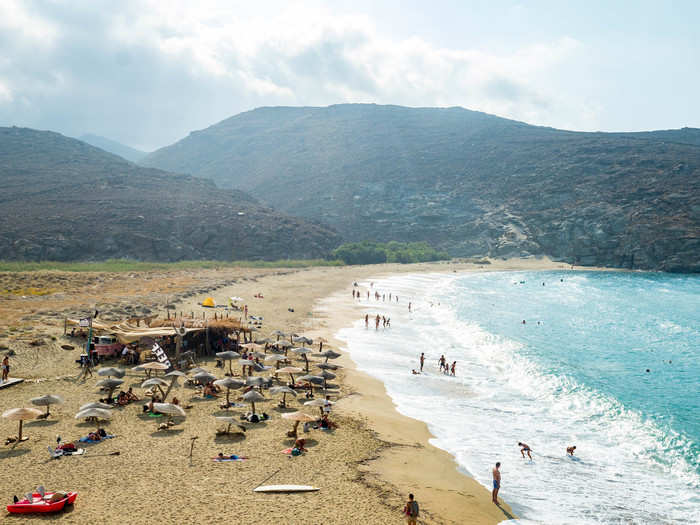
The beaches in Tinos have a wild quality to them. This isn't the place to sip a mai-tai. This is where you open a local bottle of wine, stick it in the sand, and take a nap on your blanket.
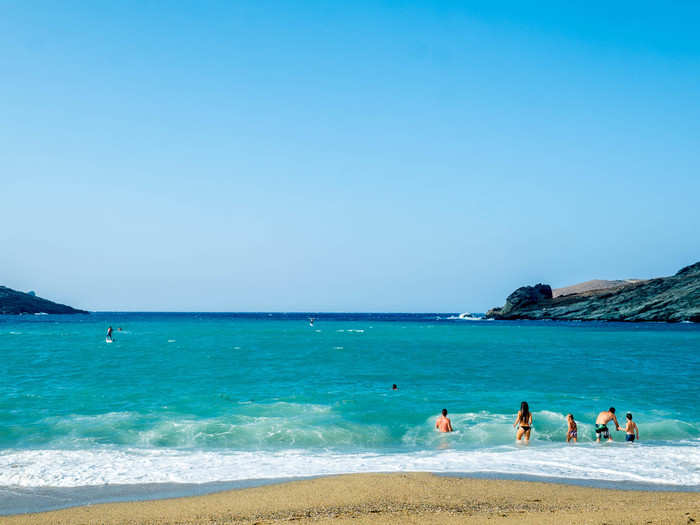
Off the beach there are numerous fields and vineyards. Tinos has its own local beer and wine, the most famous of which are Nissos beer and T-Oinis winery
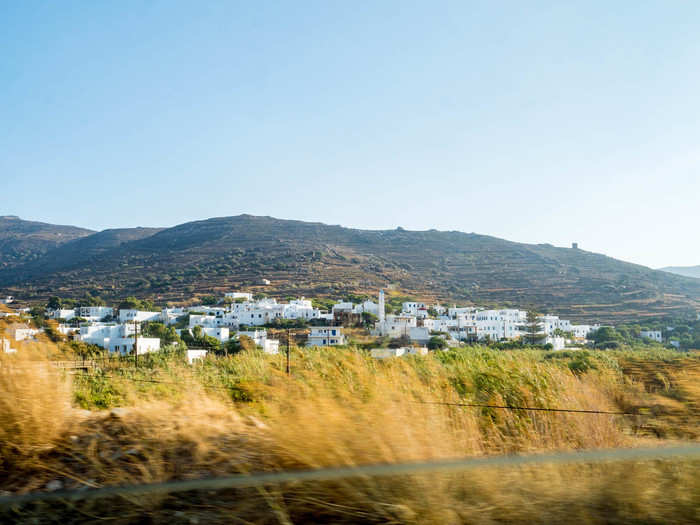
Driving in Tinos, you feel lost in time. I could have sworn that the day I spent driving around the island lasted a week. But maybe that's because I was terrified as I whipped up and down the mountains on the seemingly endless one-lane roads from village to village.
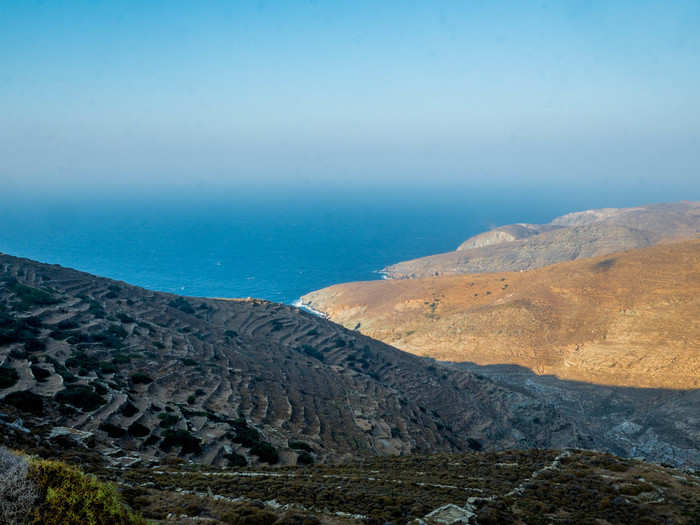
The lost-in-time quality is enhanced by sites like Isternia, a village made nearly entirely of marble sculpture. Tinos is well-known as being the birthplace of many of Greece's most famous sculptors.
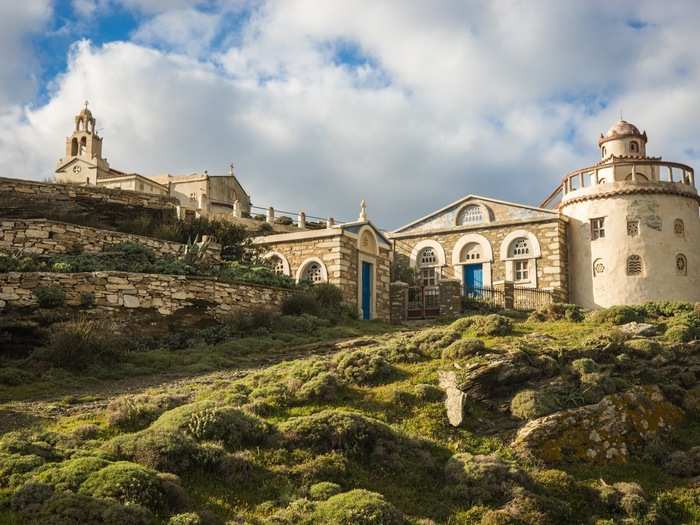
Source: Greeka
One of my last stops was to Panormos, on the northeast tip of the island. You reach it by passing through Pyrgos, one of the island's largest towns. Panormos feels like the edge of the world. There are a few fishing boats in the dock, while the port is dotted with windswept tavernas where one can picture fishermen eating after a long day's work.
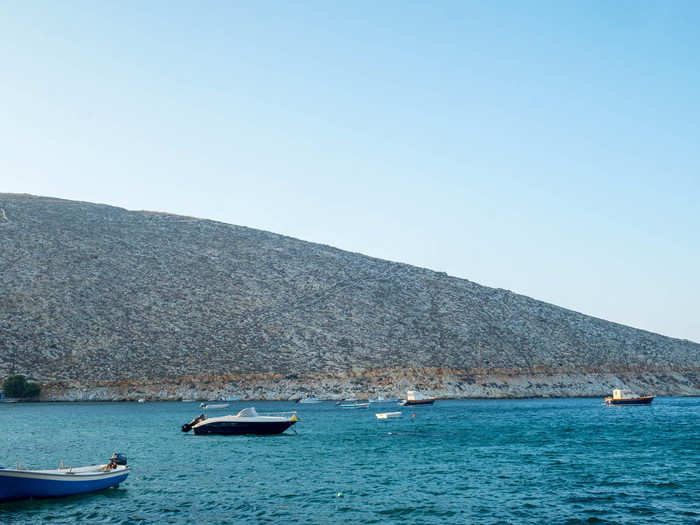
After Panormos, it was time to head back towards Chora, preferably before dark, as the sunset is most visible on the southern side of the island. But I was taking it easy on these roads, lest I fall off a cliff into the stunning greenery.
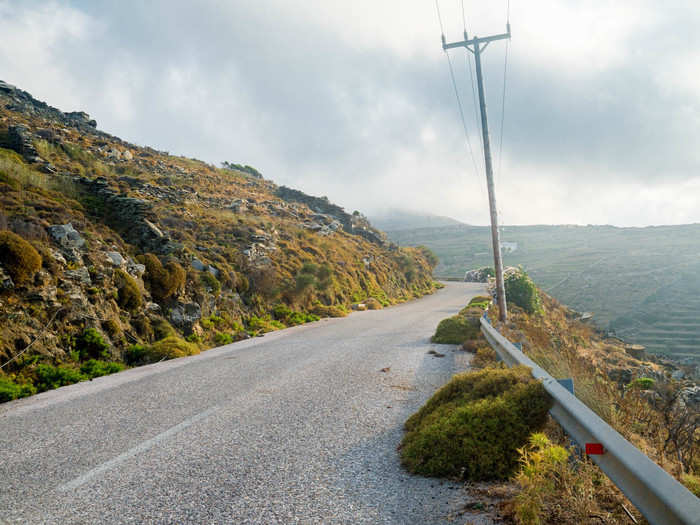
As the light turned and the sun sprayed shades of gold, purple, and red onto the island, I had to keep stopping to take photos.
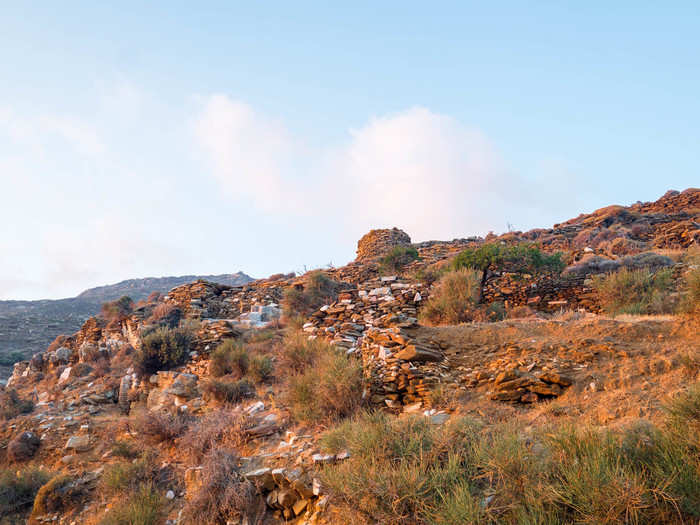
I could fill a book with all of the stunning views I saw in Tinos. Each view was fighting in an internal competition to be the most beautiful sight I had seen yet. Look one way and you see tiny islands peeking out of the azure water.
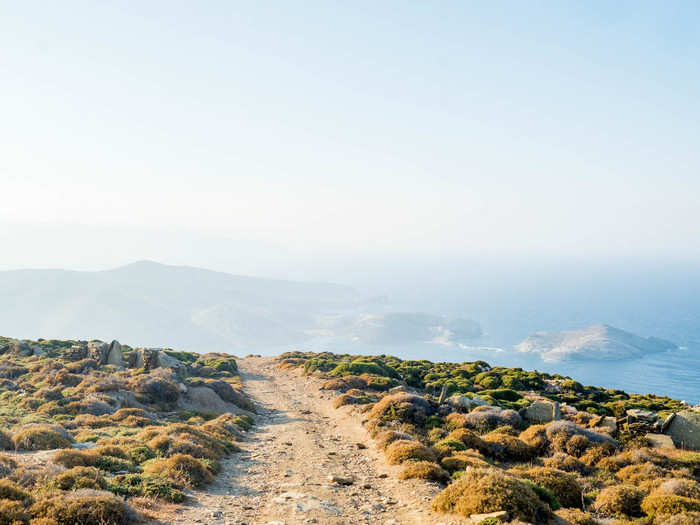
Another way and you'll see fields of moss-colored shrubs stretching into the distance.

When the sun starts to fall into the horizon line, shading the entire island in gold, it becomes apparent that this unheralded landscape is one of the most beautiful (and unseen) in the world.
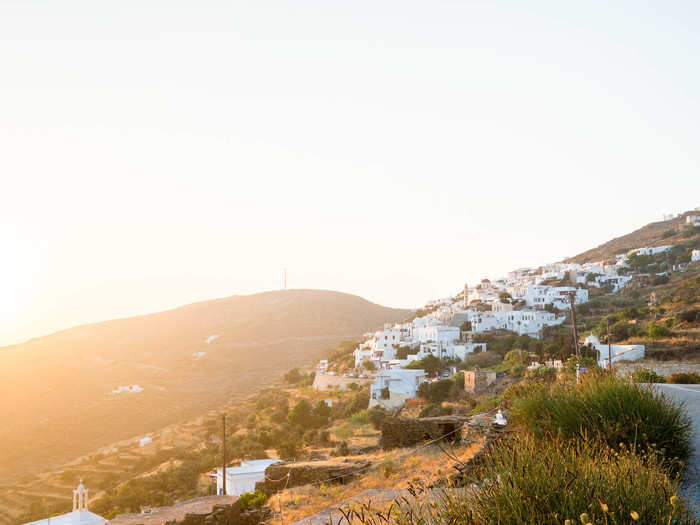
The news about Tinos is out. In June, the island won "Greece's Leading Guest Experience Destination" at the World Travel Awards (the Oscars for tourism). And the island says it has seen a 40% increase in tourism this year.
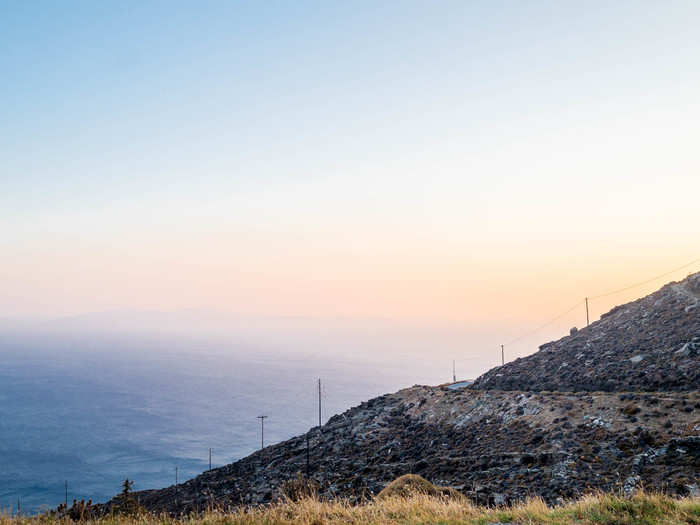
Source: GTP
The essence of Tinos feels like a place and not a destination. If it were to suddenly receive a wave of tourists, one has to hope that the residents of Tinos could bring them in without losing the culture that makes it so unique.
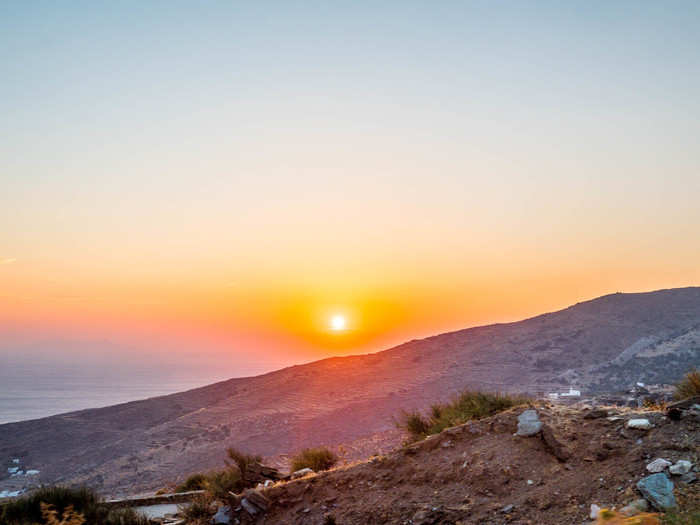
Popular Right Now
Advertisement